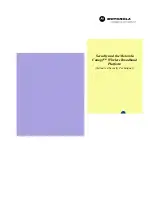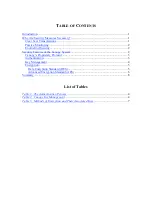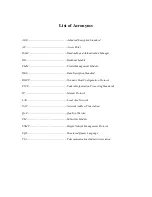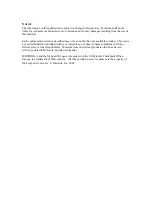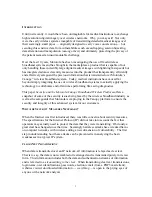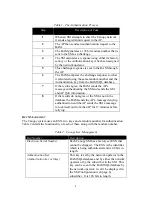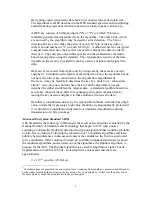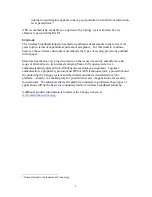
6
Decrypting cipher converts the data back to its original form called plain text.
The algorithms for DES described in the DES standard specifies both enciphering
and deciphering operations which are based on a binary number called a key.
A DES key consists of 64 binary digits ("0"s or "1"s) of which 56 bits are
randomly generated and used directly by the algorithm. The other 8 bits, which
are not used by the algorithm, may be used for error detection. The 8 error
detecting bits are set to make the parity of each 8-bit byte of the key odd, i.e.,
there is an odd number of "1"s in each 8-bit byte
2
. Authorized users of encrypted
computer data must have the key that was used to encipher the data in order to
decrypt it. The encryption algorithms specified in the standard are commonly
known among those using the standard. The cryptographic security of the data
depends on the security provided for the key used to encipher and decipher the
data.
Data can be recovered from cipher only by using exactly the same key used to
encipher it. Unauthorized recipients of the cipher who know the algorithm but do
not have the correct key cannot derive the original data algorithmically.
However, it may be feasible to determine the key by a brute force “exhaustion
attack.” Also, anyone who does have the key and the algorithm can easily
decipher the cipher and obtain the original data. A standard algorithm based on a
secure key thus provides a basis for exchanging encrypted computer data by
issuing the key used to encipher it to those authorized to have the data.
Data that is considered sensitive by the responsible authority, data that has a high
value, or data that represents a high value should be cryptographically protected if
it is vulnerable to unauthorized disclosure or undetected modification during
transmission or while in storage.”
Advanced Encryption Standard (AES)
AES Standard is the follow-up to DES and is the result of an exhaustive evaluation by the
National Institute of Standards and Technology that began in 1997 with a notice
soliciting an unclassified, publicly disclosed encryption algorithm that would be available
royalty-free worldwide. Following the submission of 15 candidate algorithms and three
publicly held conferences to discuss and analyze the candidates, the field was narrowed
to five candidates. NIST continued to study all available information and analyses about
the candidate algorithms, and selected one of the algorithms, the Rijndael algorithm, to
propose for the AES. The Rijndael algorithm is a variable length block cipher, but its
implementation in AES is 128 bits. In decimal terms, this means that there are
approximately:
3.4 x 10
38
possible 128-bit keys;
2
Sometimes keys are generated in an encrypted form. A random 64-bit number is generated and defined to
be the cipher formed by the encryption of a key using a key encrypting key. In this case the parity bits of
the encrypted key cannot be set until after the key is decrypted.

